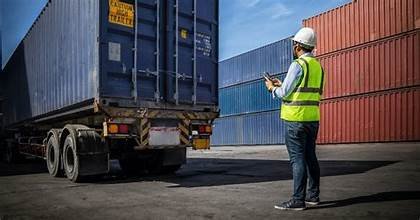Introduction
In today’s globalized world, the logistics and distribution industry plays a vital role in ensuring the seamless movement of goods and products from manufacturers to consumers. However, with the increasing complexity and sophistication of supply chains, the need for robust security measures has become paramount. Logistics and distribution security focuses on protecting the integrity of the supply chain, safeguarding against theft, tampering, and other security threats. In this article, we will explore the importance of logistics and distribution security and the measures taken to ensure the safe and efficient flow of goods.
The Significance of Logistics and Distribution Security
Logistics and distribution security encompasses a range of practices and strategies aimed at mitigating risks and safeguarding the supply chain. It involves the implementation of comprehensive security protocols, advanced technology, and trained personnel to protect goods, warehouses, transportation vehicles, and distribution centers. The primary objectives of logistics and distribution security include:
- Preventing Theft: Theft is a significant concern in the logistics and distribution industry. Criminals may target shipments, warehouses, or transportation vehicles to steal valuable goods. Implementing security measures such as access control, surveillance systems, and tracking technologies helps deter theft and minimize losses.
- Ensuring Product Integrity: Maintaining the integrity of products throughout the supply chain is crucial. Counterfeit goods, tampering, or unauthorized modifications can compromise product quality, brand reputation, and consumer safety. Logistics and distribution security measures focus on preventing such incidents and ensuring that products reach consumers in their intended state.
- Mitigating Operational Risks: The logistics and distribution process involves various operational risks, including accidents, natural disasters, and disruptions. Security measures are designed to identify and address potential vulnerabilities, ensuring the continuity of operations and minimizing the impact of unforeseen events.
- Compliance with Regulations: The logistics and distribution industry is subject to numerous regulations and standards. Adhering to these regulations is essential to avoid legal consequences and maintain the trust of customers and partners. Logistics and distribution security measures help ensure compliance with relevant laws and industry standards.
Key Components of Logistics and Distribution Security
To establish effective logistics and distribution security, several key components must be considered and implemented:
1. Risk Assessment and Planning
Conducting a comprehensive risk assessment is the first step in developing a robust security plan. This involves identifying potential threats, vulnerabilities, and areas of weakness within the supply chain. A risk assessment helps prioritize security measures and allocate resources effectively.
2. Access Control and Perimeter Security
Controlling access to warehouses, distribution centers, and transportation hubs is crucial for preventing unauthorized entry and theft. Access control systems, including biometric identification, key cards, and surveillance cameras, help monitor and restrict access to sensitive areas.
3. Surveillance and Monitoring Systems
Surveillance cameras, motion sensors, and alarm systems are essential tools in logistics and distribution security. These technologies provide real-time monitoring, deter criminal activities, and facilitate prompt response to security breaches.
4. Tracking and Tracing Technologies
Utilizing tracking and tracing technologies, such as GPS and RFID, enables real-time visibility of shipments throughout the supply chain. These technologies help identify potential delays, track the location of goods, and provide accurate delivery estimates.
5. Personnel Training and Awareness
Well-trained personnel are a critical component of logistics and distribution security. Employees should receive training on security protocols, recognizing and reporting suspicious activities, and emergency response procedures. Regular security awareness programs help maintain a security-conscious culture within the organization.
6. Secure Transportation and Packaging
Transportation security is a crucial aspect of logistics and distribution security. Employing secure transportation methods, including tamper-evident packaging, seals, and locks, helps protect goods during transit. Vehicle tracking systems and driver training programs further enhance transportation security.
7. Collaboration and Partnerships
Collaboration with stakeholders, including suppliers, carriers, and law enforcement agencies, is essential for effective logistics and distribution security. Sharing information, best practices, and intelligence helps identify and address security threats collectively.
The Benefits of Logistics and Distribution Security
Implementing robust logistics and distribution security measures offers several benefits:
- Reduced Losses: By deterring theft, tampering, and unauthorized access, logistics and distribution security measures minimize losses and protect the financial interests of organizations.
- Enhanced Customer Trust: Customers value the safety and integrity of the products they purchase. Logistics and distribution security measures build trust by ensuring that products reach consumers in their intended condition.
- Improved Operational Efficiency: Effective security measures streamline operations by minimizing disruptions, ensuring timely deliveries, and reducing the risk of supply chain interruptions.
- Compliance and Risk Management: Logistics and distribution security measures help organizations comply with regulations, industry standards, and contractual obligations. They also mitigate operational risks, protecting the organization’s reputation and minimizing potential liabilities.




